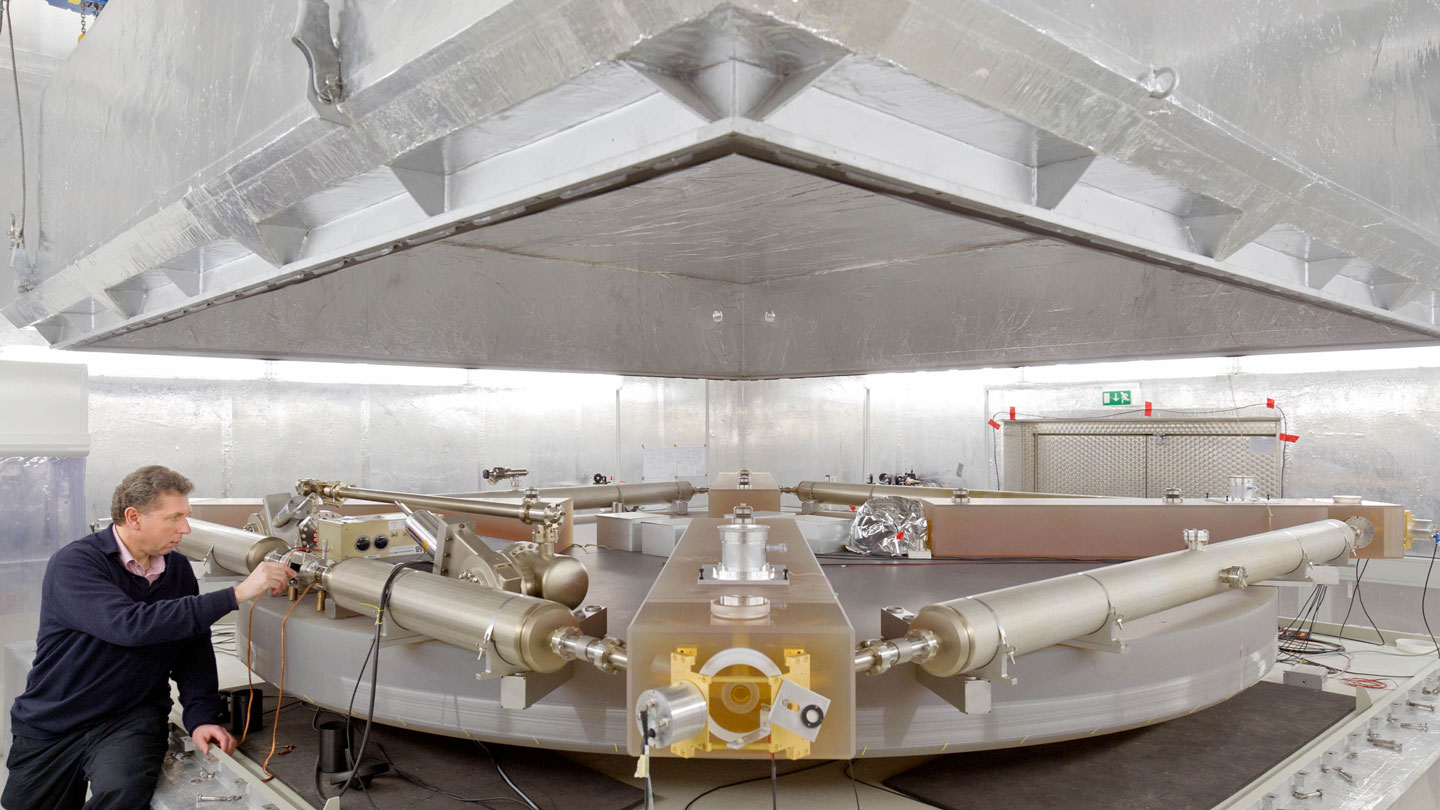Some days really are longer than others. And now scientists know by precisely how much.
Earth’s rotation isn’t perfectly steady. The planet speeds up and slows down as it twirls, making a day slightly shorter or longer by several milliseconds. Many of those variations are well understood. For example, one such variation is caused by tidal forces, created by the gravitational pull of the moon and the sun, that deform the planet. Scientists know how to predict those effects on Earth’s rotation. But other variations, caused by the fluctuating flows of Earth’s atmosphere and waters, are more difficult to estimate.
The gyroscope, known as “G” and located at the Geodetic Observatory Wettzell in Germany, is designed to measure those tiny effects. It’s what’s called a ring laser gyroscope. Within it, laser beams travel around a square-shaped ring that is 4 meters on each side. One beam circulates clockwise while another goes counterclockwise. Beams aligned with the direction of Earth’s rotation have their wavelength stretched out, while those traveling against it shrink. When combined, the two beams at slightly different wavelengths create a “beat” signal, just as two slightly out-of-tune notes do. That beat reveals the rate of Earth’s rotation, allowing G to measure the length of a day to better than a millisecond, the researchers report September 18 in Nature Photonics.
Other methods for measuring the Earth’s rotation rate rely on outside references. For example, telescopes can use the locations of distant quasars — the bright cores of active galaxies — to determine how much Earth has rotated. But those techniques give results averaged over a day. G measures a rotation rate every few hours. And its measurements are made from an underground lab. No view of the outside world is needed, says physicist Ulrich Schreiber of the Technical University of Munich, “because a gyroscope measures rotation, absolute.” That is, it measures rotation not relative to some other reference but the rotation itself.
2023-09-18 10:00:00
Article from www.sciencenews.org
